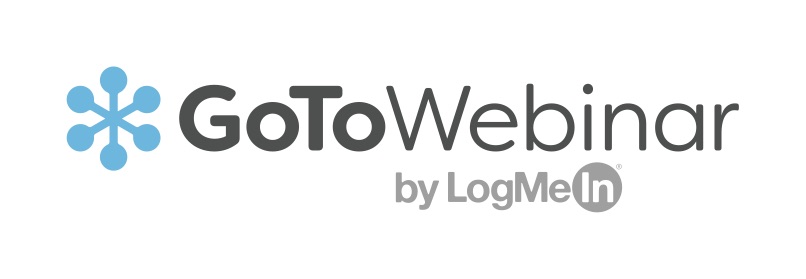Empathy—the ability to understand someone else's feelings—might not be part of your business plan, but that doesn't mean empathy doesn't affect your business.
Don't miss a MarketingProfs podcast, subscribe to our free newsletter!
Fully 96%of employees believe showing empathy is an important way to advance employee retention, according to research on workplace empathy. And employee retention is just one of many ways having empathy can improve your bottom line.
That comes as no surprise to Minter Dial, author of Heartificial Empathy: Putting Heart into Business and Artificial Intelligence.
Minter is a speaker and consultant on topics relating to branding and digital strategy. After a long career at L’Oreal, he founded The Myndset Company and then Digitalproof Consultancy Ltd., helping companies adapt to the digitally enhanced marketplace.
Also a storytelling expert, Minter wrote The Last Ring Home, a book and award-winning documentary film.
I invited Minter to Marketing Smarts to talk about the importance of empathy in business (and in life), and the role empathy should play as we build artificial intelligence and machine-learning into our technology stack.
Here are just a few highlights from our conversation:
Empathy at work will carry over into (and improve) employees' personal lives (03:34): "I wanted to do business, but in order to do empathy in business, you do need to understand empathy at a personal level.... A business can be a stimulant for change. To the extent that some people...work many, many hours. If we're in the work environment, we're actually practicing who we are and bringing that back to our personal lives at night and on the weekends. Maybe business can be a way to bring more empathy into the world, as well. But most businesses struggle with empathy in general, so my idea was to see if we can get companies to understand the power of empathy, within and without, and then have companies generate more empathy in the world."
Even when using "broadcast" channels like email, you can employ empathy for your audience (07:00): "There are ways to be smarter about your email campaigns. You're broadcasting to a large number of people, but you can resegment your emails to different populations. This is not, by the way, sociodemographics, but by the way they think and the types of engagements they have. Then you can think about when would be a better time to deliver it according to the population you have, and then of course thinking through how someone's receiving your message when it pops up on their email. Think through the title and what you're trying to deliver in terms of content. Even if it's in a mass delivery, you can apply empathy by thinking about how the receiver is going to receive it."
To become customer-centric, you must first be employee-centric (08:11): "There are two parts to empathy in business: the first is how you operate within, and then how you operate without, by which I mean towards your external stakeholders and customers. Being truly customer-centric means being first employee-centric. If you are designing to be customer-centric, but your culture internally doesn't support the employees in an appropriate way, it's going to be very hard to be customer-centric. So your first 'port of call' should be looking at how you operate internally in order to create a more empathic organization and marketing towards the outside."
To become an empathic, customer-centric company, you need your executives fully on board (09:57): "Figure out how we can apply empathy to [your company's strategy]. Think of it like a tool, a digital item. When we do digital transformation, it's digital in service of the strategy. So what strategic needs do you have and how can empathy be a part of that? Once we identify that, we should have the attention of the entire C-suite because we're talking their language, which is 'how do we achieve what we're doing according to the strategy we laid out.'
"If the top isn't empathic, we need to start at the top. There is very little chance that an organization becomes organically empathic without the top being fully on board with that, typically being the CEO. As the C-suite rolls, so will roll the rest."
Before we can hope to have empathy in artificial intelligence, we must have it ourselves (14:15): "When it comes to your [artificial intelligence], like with digital and empathy, ask what you're trying to achieve and how it can help you to achieve your strategic ambition. Within AI, there are many things you can be doing. One of them is engaging with your customer. But you need to be careful about your ethics.
"This is true of AI in general, but...you need to have empathy in order to instruct and inform your ethical backbone. Because if you don't have empathy at the beginning, chances are you're not going to create an ethical structure, which will help you rewrite your empathic code. You bring human empathy to begin with, you craft your ethical framework, and then you attack how to code empathy into your AI.
To learn more, visit MinterDial.com or follow Minter on Twitter: @mdial, and be sure to pick up your copy of Heartificial Empathy: Putting Heart into Business and Artificial Intelligence..
Minter and I talked about much more, so be sure to listen to the entire show, which you can do above, or download the mp3 and listen at your convenience. Of course, you can also subscribe to the Marketing Smarts podcast in iTunes or via RSS and never miss an episode!
This episode brought to you by GoToWebinar:
GoTo Webinar makes it easy to produce engaging online events. Whether you want to connect with your prospects, customers or employees, GoTo Webinar has the tools and analytics you need. Start creating interactive and educational webinars your audience will love.
Music credit: Noam Weinstein.
...sign up for free to continue reading
Don't miss a MarketingProfs podcast, subscribe to our free newsletter!
Published on March 14, 2019







